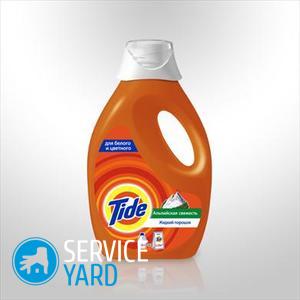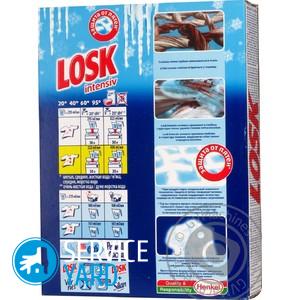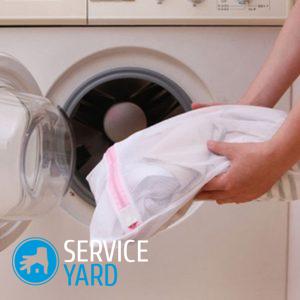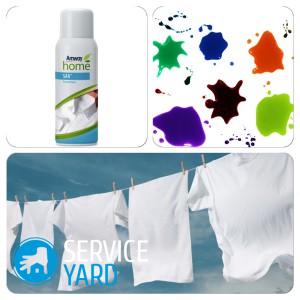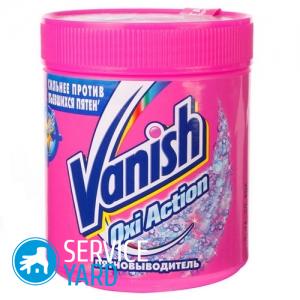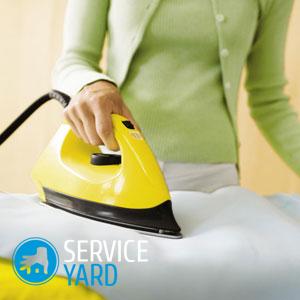How to wash?
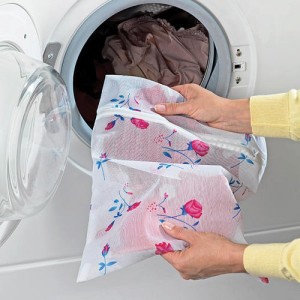
Our grandmothers washed all things by hand: they simply poured water into a basin, added grated laundry soap and got down to business. Fortunately, automatic washing machines saved us from a laborious, tedious, lengthy process, but sometimes you still have to wash some things manually. Therefore, every housewife should know how to wash with her hands and with the help of a machine so that after the next wash there will be no stains and other unpleasant traces on things. In this article we will tell you how to organize hand washing, as well as washing things in the washing machine, because no process can be left to chance.
to contents ↑When is hand washing recommended?
Hand wash is the safest way to clean things. It can extend the life of your clothes, especially made of delicate and special fabrics.
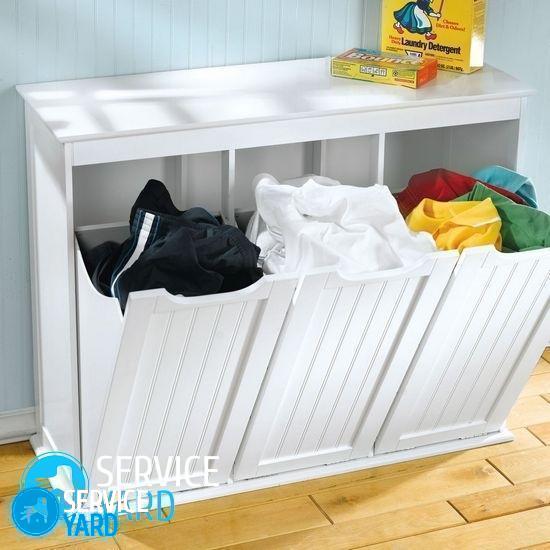 The capricious elements of the wardrobe, which are recommended to be washed exclusively by hand, are:
The capricious elements of the wardrobe, which are recommended to be washed exclusively by hand, are:
- Underwear.
- Woolen things (sweaters, sweaters).
- Cashmere.
- Silk scarves and scarves.
- Lacy products.
- Delicate blouses.
- Fabrics with unstable paint.
- Kids' things.
- Things for the newborn.
How to prepare things for washing?
Before washing by hand, do the preliminary work:
- Take a look at the product label. It can be either paper or fabric, but it is most often inside clothes - on the collar or in the seam on the side. Understand the designation of pictograms on it, which indicate the optimum washing temperature, the susceptibility of the product to machine or chemical treatment, as well as the possibility or vice versa - the impossibility of squeezing it. Perhaps here you will find our detailed decoding of all symbols on clothes.
- If the fabric is thin, open all buttons, iron buckles, as well as the rest of the metal fittings. This will prevent the appearance of red spots after washing.
- If you plan to boil things, then remove the buttons made of plastic, which may be deformed during processing.
- Remove white applications from white products, as they may fade.
- Woolen things turn inside out.
- Before hand washing clothes are better to soak.
Important! When choosing detergents, so as not to lose in their quality, use our ratings:
Manual Wash Rules
It is not difficult to wash correctly by hand if you follow these recommendations:
- Do not wash colored and light items at the same time.
- After contamination, wash the products as soon as possible so that the stains do not have time to dry.
- In soapy water, less contaminated things are first cleaned, then a little dirtier and need to finish with the dirtiest ones. In difficult cases, use a brush or washboard.
- For each type of fabric, you must use your own detergent.
- The softer the fabric, the colder the water should be.
- Wipe the cuffs of men's shirts and collars with a brush and soap, then wash.
- Hand wash delicate fabrics very carefully so as not to stretch the product.
- Soak a product that may fade during washing, it is better in water with sodium chloride.
- When rinsing, follow these tips:
- Rinse all products well so that no stains from soap or powder remain on things.
- Use special rinsed. Dilute them with water according to the instructions.
- Change the water while rinsing until it is clean and clear.
- When rinsing colored clothes, add some vinegar to the water.
Tips for processing products from various materials
- Soak a knitted item in cold water with the addition of vinegar, and during rinsing add glycerin to the water (1 tbsp. Per 10 liters of water).
- Oiled workwear is easier to remove if you use the following method:
- Grind laundry soap (¼ piece) and dissolve in 1 liter of boiling water.
- In the cooled solution, add 0.5 l of kerosene and 1 tbsp. l any detergent.
- With the prepared solution, rub overalls (collar, cuffs, sleeves) and leave them rolled up for 24 hours.
- At the end of the work clothes, wash in soapy hot water and rinse thoroughly in warm water.
- Dry these things in the fresh air to get rid of bad smell.
- Wash down shawls in a warm solution prepared from baby soap and shampoo.
- Silk and wool items are easier to wash if mustard is added to the water. It will help remove greasy spots. Use the product as follows:
- 1 tbsp. Soak dry mustard in water and grind so that you get a batter.
- Wipe the resulting dough through cheesecloth.
- Allow the dough to stand in warm water for 2 hours.
- Do not add any detergents during washing.
- Do not rub mohair during washing. You need to squeeze them between the towels. While the mohair piece is wet, brush it.
- To preserve the appearance of terry towels and their fluffy, after washing, immerse items in salted water. Terry towels are not recommended.
- To properly wash the tulle, follow these steps:
- Shake the curtains to remove dust.
- Soak in salted warm water. Change the water at least 3 times.
- Soak the curtains in a detergent solution and leave them for several hours (the product should be intended for washing synthetics).
- Prepare a new serving of washing solution.
- Wash the tulle at a temperature of 50 C. Do not rub the product or twist it.
- Rinse the tulle first in warm water and then in cold. In the rinse water, add a small amount of milk to the blue solution to make the curtains look like new.
- Do not wring the tulle, but dry it straightened.
- Instead of twisting, wrap the curtains in a dry towel and change the towel as it gets wet.
- Hang the tulle in the air.
Proper Hand Wash - Step-by-Step Guide
 Hand washing is not so difficult, for this you only need to prepare 2 bowls of water (one for washing, the other for rinsing) and stock up with washing powder.
Hand washing is not so difficult, for this you only need to prepare 2 bowls of water (one for washing, the other for rinsing) and stock up with washing powder.
Important! If you do not have a wash basin, use a bathtub or sink with a plug.
Step-by-step process instruction:
- Pour warm water into one bowl.
Important! Different fabrics require different temperatures: white and light things need hot water, dark - cold.
- Dissolve in water 1-2 tbsp. l powder (depending on the size of the basin). For hand washing, liquid powder is best suited, which instantly dissolves in water.
- Mix detergent thoroughly with your hands. Soap flakes should not remain in the water, otherwise - products may become covered with stains.
- Put things in soapy water and leave for 10-15 minutes. Rub the most contaminated product areas with your hands using a clothes brush.
- There are two ways to erase:
- Using a stick. Stuff things in the water up and down (or in a circle) with gentle movements.
- Repeat the same procedure with your hand.
Important! Make sure that things are not tied into knots and are not entangled with each other.
- Take each item separately and rub the cloth against each other.
Important! If you have a washboard, then use it to handle dirty things.
- Rinse each item individually and in turn in clean, cool water.
- Gently squeeze out excess water.
Important! For delicate fabrics, use a towel to spin.
- Hang clothes to dry.Dry your coat and cashmere on a flat surface with a clean sheet under them.
Important! To prevent clothes from fading in the sun, turn them inside out during drying.
Helpful hints:
- If you need to bleach white things, do it after washing before rinsing. You will find detailed tips, recipes, ways to solve this problem in our article. "How to whiten white things?".
- Before washing, be sure to check all pockets for foreign objects.
How to wash in a washing machine?
We hope that you already know the basic rules, and you understand that in addition to the washing machine, you will need a quality detergent, water and electricity.
Preparatory stage
 Before washing things in an automatic machine, it is necessary to carry out preliminary preparation:
Before washing things in an automatic machine, it is necessary to carry out preliminary preparation:
- Check the labels on the clothes and see if it is possible to wash the product in the machine, how to wash it, at what temperature and with which detergent.
- Prepare clothes:
- Remove all foreign objects from things. Make sure that there are no pins or other metal objects on the product that could damage the manhole cuff.
- Remove belts from trousers.
- Close all zippers and buttons.
- Pants and jeans are turned inside out.
- Tie the shoelaces.
- Straighten the sleeves of the shirts.
- Turn out socks, stockings, clothing from knitwear and terry cloth, as well as pillowcases and duvet covers.
- Put small things and underwear in special laundry bag.
- Sort the laundry by color, fabric composition. Separate heavily soiled clothing and items that may shed.
- Grease stains with a stain remover.
Important! When choosing a stain remover, be careful - there are products for white, colored, natural, synthetic, delicate fabrics. Plus they are sold in the form of powders, liquids, pencils, etc. To use the truly effective and economical, we advise you to focus on our reviews, based on the opinions of housewives and experts:
Machine wash machine - step by step instructions
To properly wash things in the washing machine, you must follow this sequence of actions:
- Bookmark clothes in the car. During the bookmark, follow the manufacturer's recommendations, strictly follow the optimal load weight specified in the instructions. Follow these guidelines:
- Do not fill the machine to failure, but distribute things evenly over each wash.
- Do not wash together products that are too large or too small, such as a sheet with socks, so as not to unbalance the machine.
- Do not machine too little clothes.
- Program selection. To properly wash things, choose the washing, rinsing and spinning modes correctly. It all depends on the type of tissue and the degree of contamination. Follow these general guidelines:
- Wash light cotton and linen fabrics at 95 ° C and squeeze at the highest possible rotation speed.
- Wash colored cotton underwear in hot water up to 60 ° C and squeeze at the highest speeds.
- Wash things from synthetic fabrics at a temperature not exceeding 50 ° C, and squeeze 800-900 rpm.
- Handle things that can fade in cool water no higher than 30 C.
- For washing products from delicate fabrics (wool, silk), use water no higher than 40 C, and spin at a speed of no more than 600 per minute, or discard the latter altogether.
- The choice of detergents. Choose the product according to the type of fabric and type of contamination, based on the information on the packaging. Also consider these helpful tips:
- Do not use detergents intended for hand washing. Abundant foam can not only remain on things, but also damage the machine itself.
- Water-soluble contaminants (salt, sweat, etc.) are easily washed off with a solution of water and washing powder.
- Pollution, insoluble in water (sand, grease, age spots), can only overcome chemicals with enzymes.
- Use the optimal dose of detergents, otherwise things after washing will be tough and poorly washed, and the machine will wear out faster.
Important! Do not add detergent directly to the drum on clothing, as the powder will not be able to dissolve completely in the creases of the products. Pour the product into special containers. If not provided, pour detergent from the outside onto a filled and covered drum.
- After the washing process, shake and dry the clothes.
- Hang the washed laundry and iron as necessary.
Helpful hints:
- Before loading a thing into the machine, check to see if it fades. To do this, moisten a small area of the product with warm water and wipe it with a white cloth: if the material remains clean, feel free to wash the product.
- To prevent pockets and slits for buttons on knitted and crocheted items from being pulled out, sew them before washing with small stitches, and then dry them after drying.
- Do not wash shirts and shirts with heavy items, otherwise they may tear.
- Do not wash more than one pair of denim items at a time, as they take up a lot of space and can overload the machine.
- Do not mix detergents or powder with other chemicals, for example, bleach must not be mixed with ammonia, as this creates a deadly toxic gas.
- Woolen clothes without pre-soaking.
to contents ↑Important! After washing, you will need to competently complete the entire process of cleaning things. And to do this without problems quickly and easily, follow the links to individual articles on each topic:
Stock footage
We hope that the information received will allow you to simplify the washing process, and so that you are not bored, we recommend listening to music and singing along with it during the washing process. Let your things please you with cleanliness and whiteness, and a good mood will not leave you even during such an activity as washing.
- Badges on clothes - how to wash?
- Liquid powder - convenient, effective or practical?
- Washing powder - rating
- How to whiten white things at home?
- Bag for washing clothes in a washing machine
- Amway stain remover
- Good and inexpensive counterparts Vanisha
- Stain removers for clothes
- How to configure the ironing mode?
- How to store clothes?





